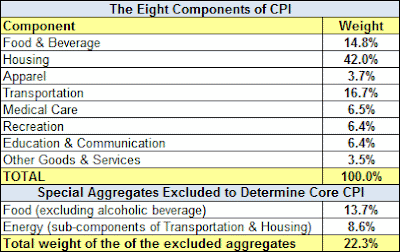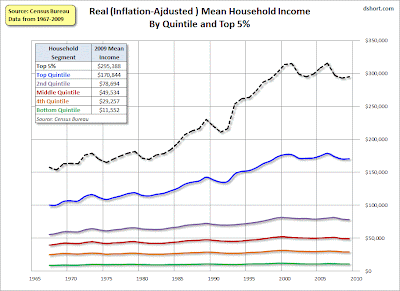 1. For American households that were in the lowest earnings quintile (bottom 20 percent) in 2001, only 56% of those households remained in that quintile in 2007, and 44 percent had moved to a higher quintile by 2007. Five percent of low-income households in 2001 had moved to one of the top two quintiles in just six years.
1. For American households that were in the lowest earnings quintile (bottom 20 percent) in 2001, only 56% of those households remained in that quintile in 2007, and 44 percent had moved to a higher quintile by 2007. Five percent of low-income households in 2001 had moved to one of the top two quintiles in just six years.2. For those households that were in the highest earnings quintile (top 20 percent) in 2001, 34 percent had moved to a lower quintile by 2007, and 5 percent of those households had moved all the way to the bottom quintile.
3. For those households in the middle earnings quintile (middle 20 percent) in 2001, about one-third moved to a higher quintile by 2007, more than one-fourth moved to a lower quintile, and only 42 percent remained in the same quintile.
4. More than half of the households in the second, third, and fourth quintiles in 2001 moved to a different earnings quintiles by 2007 (see bottom row in chart).
source



 source
source


 source
source

 source
source










 source
source


 source
source source
source



 source
source source
source









 source
source source
source
 source
source source
source